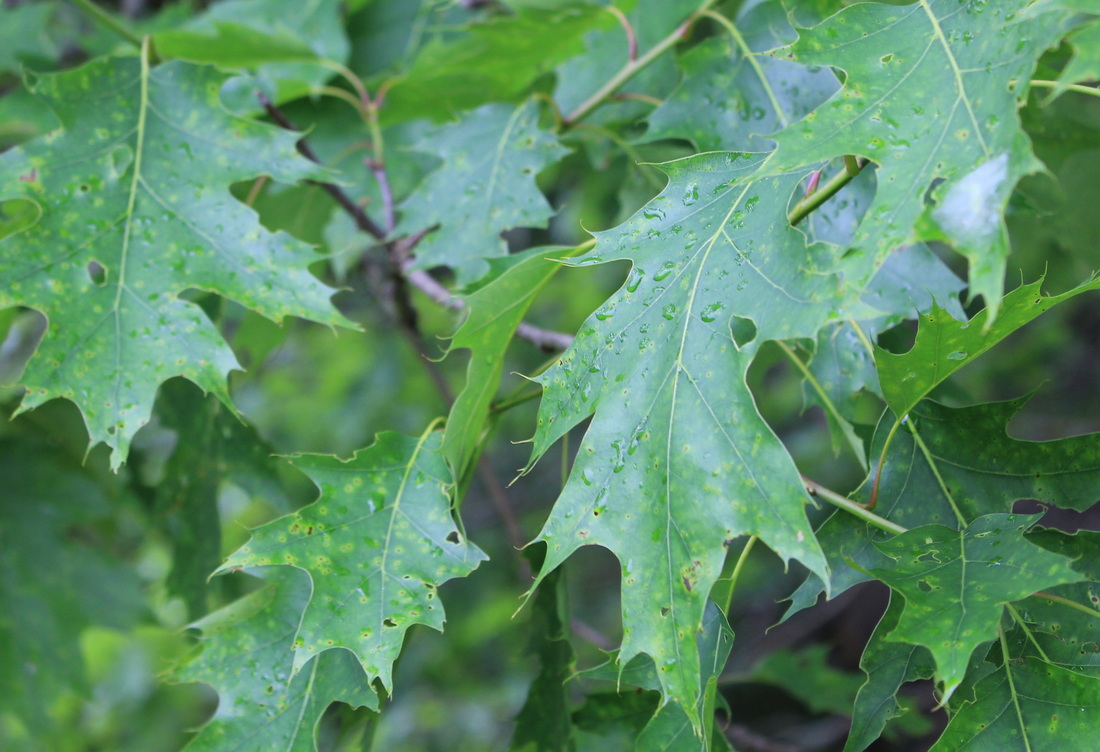15 June 2015
Northern Red Oak
Quercus rubra L.
West Penjajawoc Grasslands
This tree is very common in Bangor and can grow to be quite large. You can identify it easily by the leaves in the summer and fall. They are beautifully lobed, usually not more than halfway to the midrib. They turn brown and hang on late into the fall season. Also look for acorns (shells and caps) on the ground nearby. Squirrels chew off the ends of oak branches to harvest the acorns from the ground. Acorns have a two-year development process and can be very heavy if conditions are right (this is called a "mast year"). Photo by Donne Sinderson
Northern Red Oak
Quercus rubra L.
West Penjajawoc Grasslands
This tree is very common in Bangor and can grow to be quite large. You can identify it easily by the leaves in the summer and fall. They are beautifully lobed, usually not more than halfway to the midrib. They turn brown and hang on late into the fall season. Also look for acorns (shells and caps) on the ground nearby. Squirrels chew off the ends of oak branches to harvest the acorns from the ground. Acorns have a two-year development process and can be very heavy if conditions are right (this is called a "mast year"). Photo by Donne Sinderson


